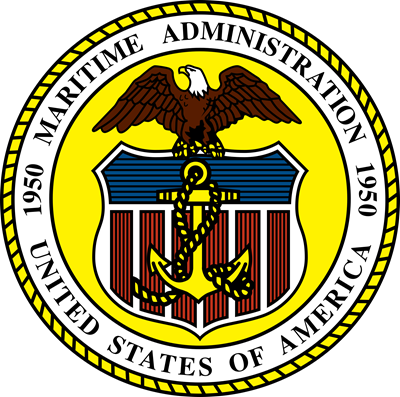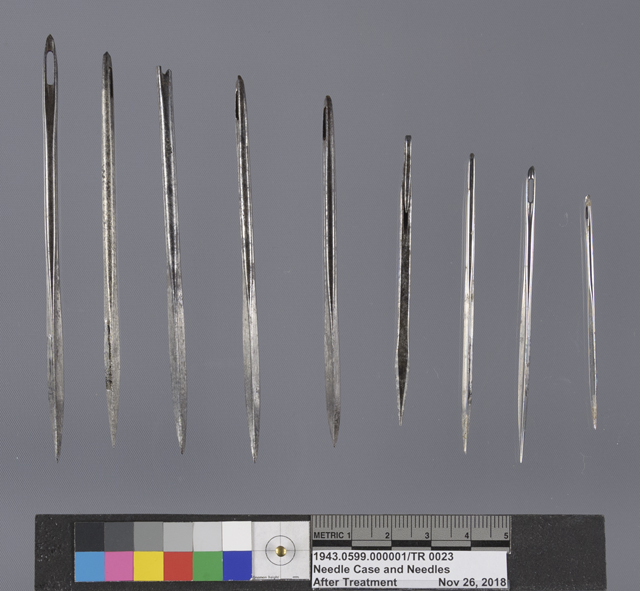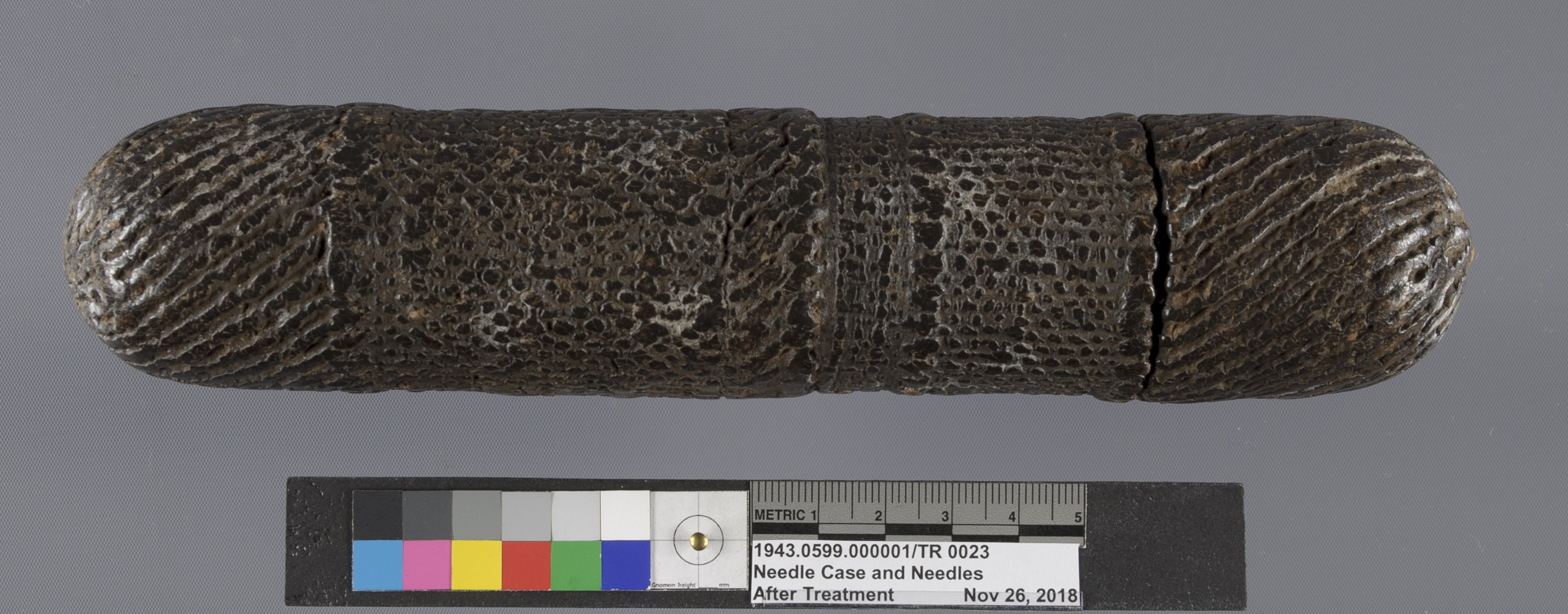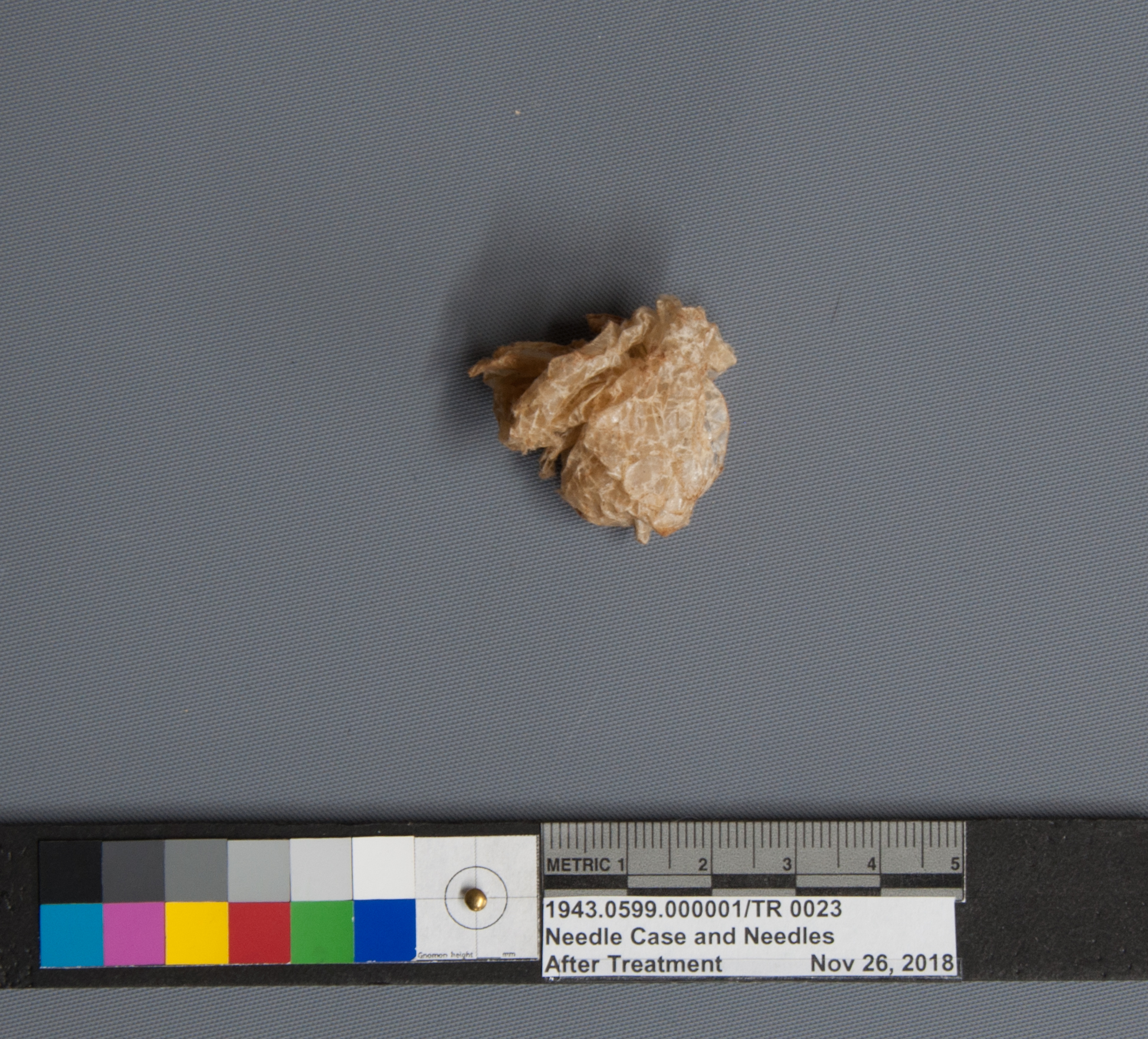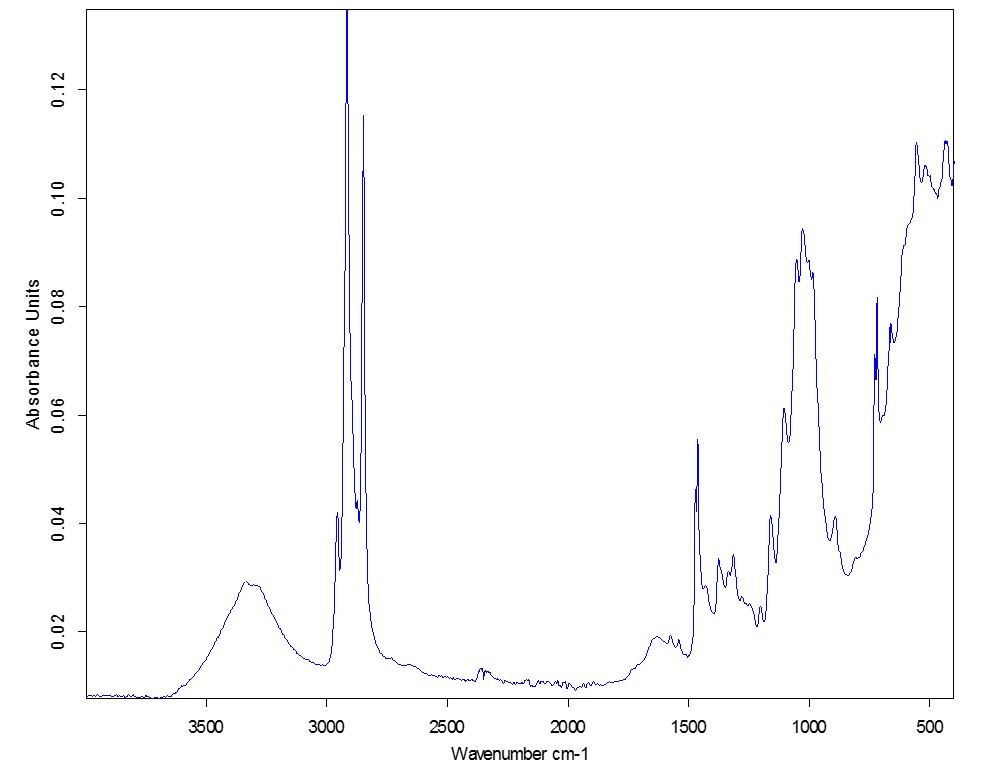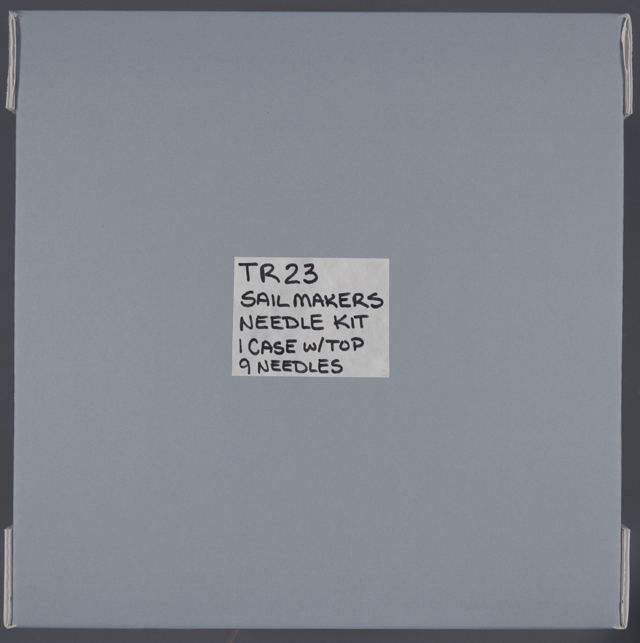Hello again, Mariners. If you don’t remember me, I’m the museum’s Assistant Objects Conservator. Recently, I’ve been working on several items that are going out on loan to various institutions next year. While only a couple of these projects will be very treatment intensive (probably more on those later…), I thought I’d share an example of the routine care and due diligence paid to every artifact prior to loan. Every little consideration is important to ensure the safety of an object while it is being appreciated elsewhere.
Our Collections Manager, Jeanne, asked me to look at this sailmaker’s needle case and needles (accessioned in 1934), which was requested for loan by the American Revolution Museum at Yorktown for an upcoming exhibit.
The case and needles were in good condition overall; however, there was a crumpled up bit of organic material inside the case. Likely a wax paper used to wax the needles for sewing, I wanted to be sure that we had a positive ID on this material, so that appropriate recommendations could be made for its transport and display. We all know what it means to ‘assume’ anything, and this is doubly true when it comes to the care of our cultural heritage materials.
After I carefully extracted the material from the case over in the conservation lab, Dr. Molly McGath analyzed the material with ATR-FTIR. This is an analytical tool used to identify chemical bonds (mostly for organics), which can help characterize a material.
The above spectrum was used to confirm the material’s identity: paper and wax. With this information in hand, I felt comfortable moving forward with our loan recommendations. The presence of wax on the paper also informed my treatment. Several of the needles had a waxy substance on their tips. I cleaned areas of iron corrosion from the needles and coated them appropriately, careful to NOT remove any of this wax, since it is a confirmed part of the object’s history. Similar decisions were made regarding the cleaning of the ropework cover on the case, which also had evidence of wax residues.
In addition to analyzing the wax paper inside the case, I also took a closer look at the needles under the microscope. You can see in the images below some interesting markings found on the various needles. All of the larger needles have the letters ‘WL’ incised in the shaft.
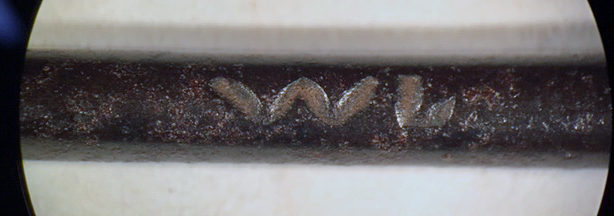
One of the needles had a unique eye, which was created by rounding over the flattened end of the needle back onto itself. A closer look at the stamp mark on this needle revealed patent information.

After analysis and treatment of the needles and case were completed, Monitor Collections Manager and box-maker extraordinaire Mike Saul created a beautiful custom box to send the object on its way.
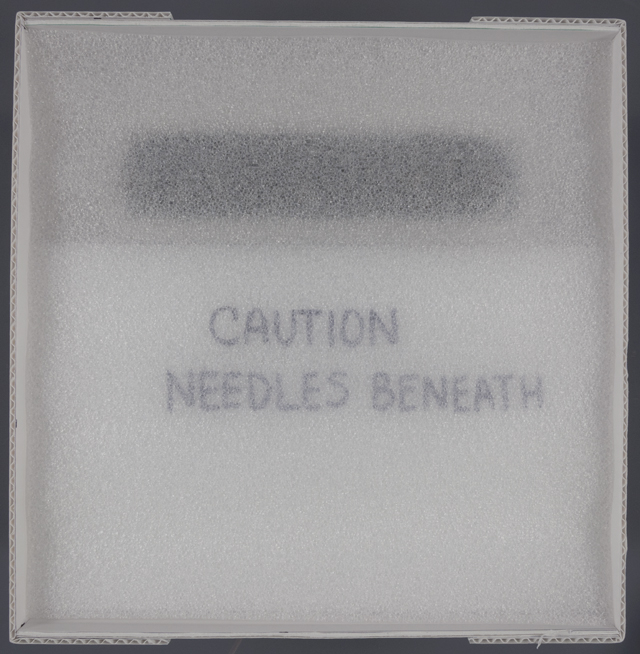
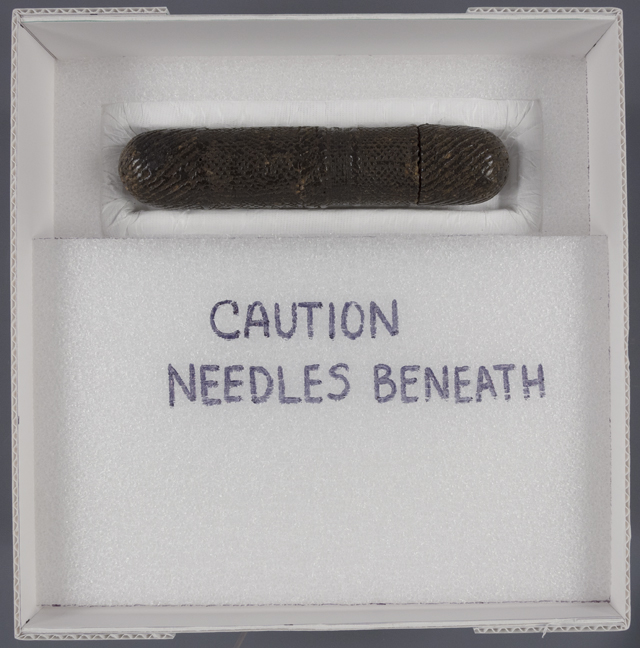
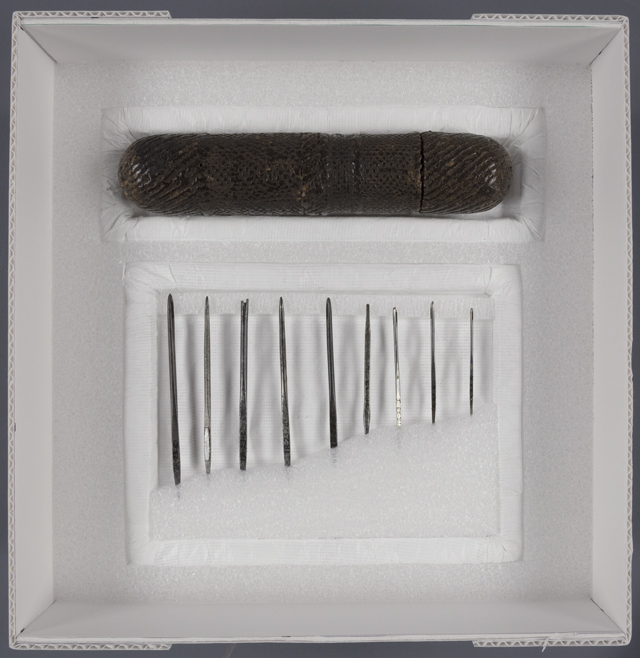
This object had a short stay in the conservation lab, but it is now ready to be returned to Collections Management to continue the thorough and thoughtful process of preparing artifacts for loan. We are so glad to share our passion for our collections with others! As always, its an honor to be a part of the journey.
Funding for the ATR-FTIR and Dr. Molly McGath is generously provided by the National Maritime Heritage Grant Program which is administered nationally by the U.S. Department of the Interior along with the Maritime Administration of the U.S. Department of Transportation, and in Virginia, by the Department of Historic Resources.

